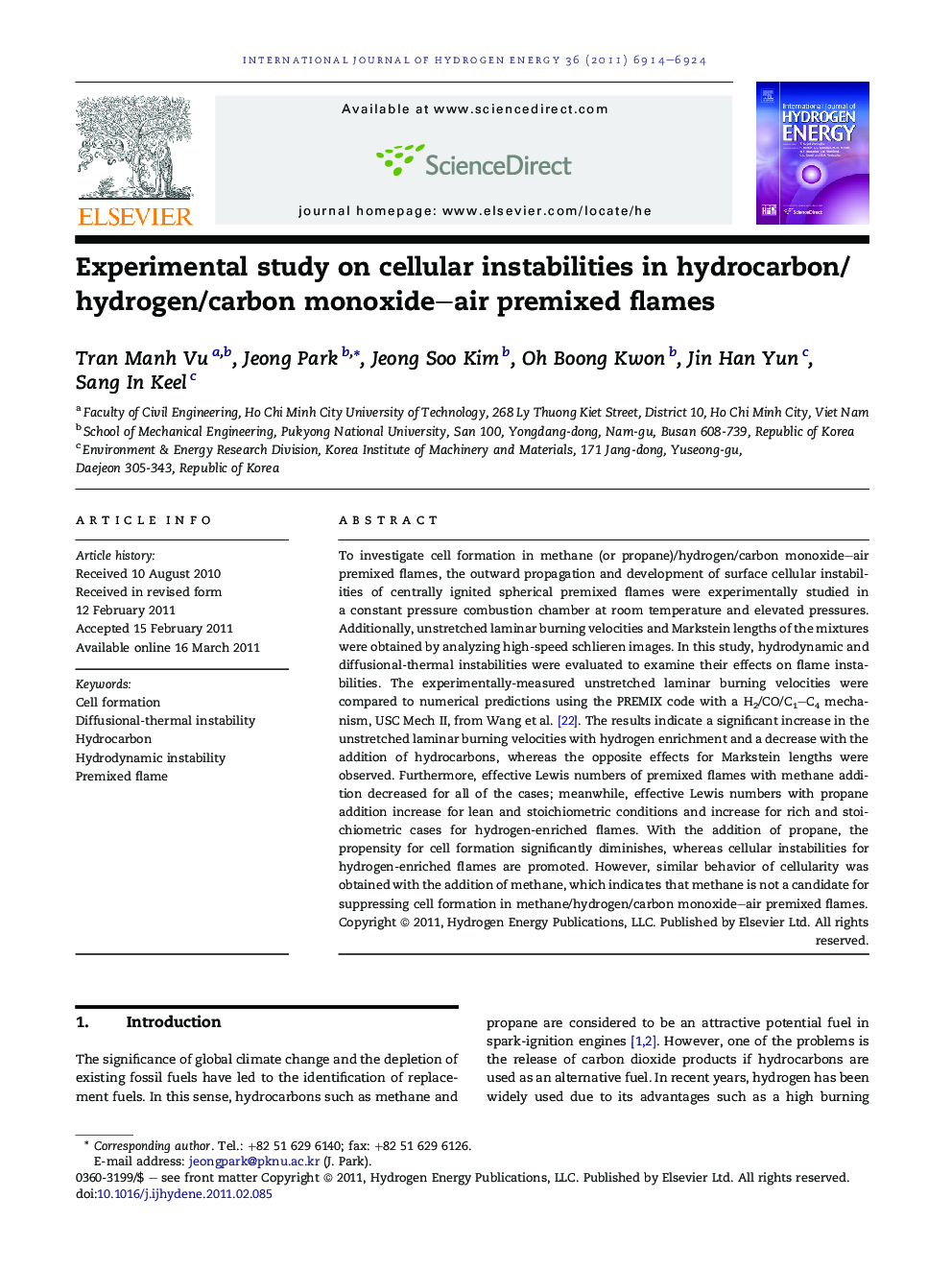| Article ID | Journal | Published Year | Pages | File Type |
|---|---|---|---|---|
| 1276050 | International Journal of Hydrogen Energy | 2011 | 11 Pages |
To investigate cell formation in methane (or propane)/hydrogen/carbon monoxide–air premixed flames, the outward propagation and development of surface cellular instabilities of centrally ignited spherical premixed flames were experimentally studied in a constant pressure combustion chamber at room temperature and elevated pressures. Additionally, unstretched laminar burning velocities and Markstein lengths of the mixtures were obtained by analyzing high-speed schlieren images. In this study, hydrodynamic and diffusional-thermal instabilities were evaluated to examine their effects on flame instabilities. The experimentally-measured unstretched laminar burning velocities were compared to numerical predictions using the PREMIX code with a H2/CO/C1–C4 mechanism, USC Mech II, from Wang et al. [22]. The results indicate a significant increase in the unstretched laminar burning velocities with hydrogen enrichment and a decrease with the addition of hydrocarbons, whereas the opposite effects for Markstein lengths were observed. Furthermore, effective Lewis numbers of premixed flames with methane addition decreased for all of the cases; meanwhile, effective Lewis numbers with propane addition increase for lean and stoichiometric conditions and increase for rich and stoichiometric cases for hydrogen-enriched flames. With the addition of propane, the propensity for cell formation significantly diminishes, whereas cellular instabilities for hydrogen-enriched flames are promoted. However, similar behavior of cellularity was obtained with the addition of methane, which indicates that methane is not a candidate for suppressing cell formation in methane/hydrogen/carbon monoxide–air premixed flames.
